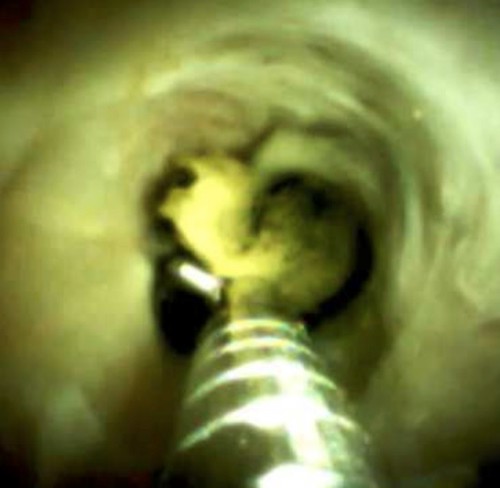
 Saikiran Raghavapuram, MD, Mohit Girotra, MD, FACP, and Benjamin Tharian, MD, MRCP, FRACP, from the University of Arkansas for the Medical Sciences present this video case.
Saikiran Raghavapuram, MD, Mohit Girotra, MD, FACP, and Benjamin Tharian, MD, MRCP, FRACP, from the University of Arkansas for the Medical Sciences present this video case.
We present a 63-year-old male with a history of orthotopic liver transplantation 3 years ago, who presented with cholestatic jaundice. Work up revealed severe stricture of proximal common bile duct (CBD) from ischemic cholangiopathy secondary to hepatic artery thrombosis. Initial ERCP was not successful, as the guidewire, despite cannulation, could not be advanced across the stricture despite various maneuvers including change of scope position and guide wires. Attempts by interventional radiology to perform percutaneous trans hepatic cholangiography (PTC) failed, as the guidewires could not be advanced beyond the intra hepatics. Suspicion was high for bile plugs formed as a result of the ischemic process, hindering the passage of the guidewire. Cholangioscopy showed black ischemic tissue filling the entire bile duct and preventing the passage of the guidewire. SpyBite was used to clear the bile duct of the tissue, resulting in the successful passage of the guidewire into intrahepatics, dilatation of the stricture, and placement of stent across it. He made excellent clinical and laboratory improvement over 3 months, thus salvaging him from a “super-urgent” liver transplant. He was relisted later.

Figure 1: Through-the-cholangioscope forceps removal of the bile plugs.
This case describes the challenges in treating biliary stricture in a post-transplant patient secondary to ischemic cholangiopathy. In such scenarios, apart from strictures, the presence of ischemic plugs within the bile duct could preclude the advancement of guidewires by ERCP and PTC. Direct vision using a cholangioscope and clearing of the ducts would help in advancement of the guidewire and successful placement of stent across biliary strictures. This was used as a surgery-sparing approach.
Digital Cholangioscopy is a user-friendly tool in the management of difficult cases of ischemic cholangiopathy in transplant patients. The bile plugs, impeding the passage of the wire during regular ERCP and PTC, could be removed or re-canalized. The SpyGlass DS, provides diagnostic as well as therapeutic options for successful stent placement and could be used as a surgery-sparing approach.
Find more VideoGIE cases online.
The information presented in Endoscopedia reflects the opinions of the authors and does not represent the position of the American Society for Gastrointestinal Endoscopy (ASGE). ASGE expressly disclaims any warranties or guarantees, expressed or implied, and is not liable for damages of any kind in connection with the material, information, or procedures set forth.
